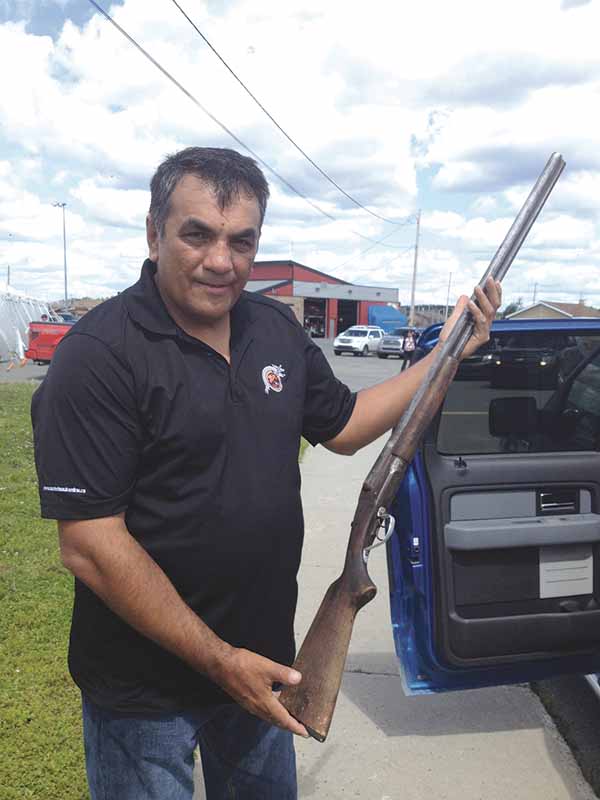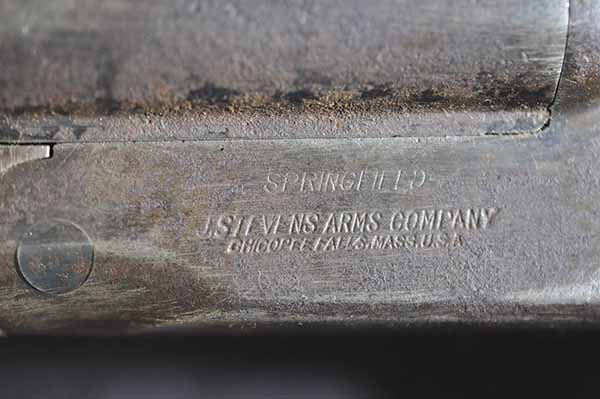Surprisingly well preserved, a J. Stevens double-barreled, break-action shotgun that was lost in the dense wilderness between Chapais and Waswanipi more than 50 years ago has made a roundabout journey to the grandson of the long-deceased hunter who originally owned the weapon.
Former CBC reporter Gaston Cooper, a proud Cree hunter who now works at the Cree Cultural Institute in Oujé-Bougoumou, has the rifle that once belonged to his grandfather Alec Cooper, who was born in 1902 and died in 1965, the year before Gaston was born.
Alec Cooper was a former chief of Waswanipi renowned for his generous disposition and his skills as a master tracker and hunter. He bought the shotgun from the Hudson Bay Company at the Old Waswanipi Post in the late 1930s. The gun disappeared one day in the late 1950s after Alec loaned it to Gaston’s future uncle, the late Richard Bowen, for a duck-hunting expedition.
In a moment of carelessness, Bowen left the gun leaning against a tree during the hunt.
“My uncle had put it near a tree and walked away without even thinking about it,” said Gaston. “Eventually, he goes back looking for it, and there’s so many trees he doesn’t know which tree he put it under.
“Sure, my grandfather must have been upset,” said Gaston. “It’s a gun and at that time guns were very valuable.”
For half a century the gun remained propped up against the same tree protected by a pouch of white canvas, sewn and stitched by Gaston’s grandmother. It was only discovered in 2010, and remarkably, identified on sight.
“Willie Wapachee, the tallyman who found the gun, remembered that my late grandfather had lost it,” said Gaston. “He decided to return it, but my grandfather had passed away some 50-plus years ago, so he gave it to his son, my uncle, Walter Cooper. He had it for four years until he passed away two years ago.”
This past year Gaston got an unexpected call from his aunt Charlotte, who entrusted him with the shotgun.
“My aunt took it out of the closet, and it was still in its pouch. I opened it and right away I sensed the connection with my grandpa,” said Gaston. “You could see the gun in its original state. It was preserved as if nothing had happened to it.”
Despite never having met him, Gaston says he’s felt a spiritual connection with his grandfather throughout his life. Once, worry-stricken upon hearing news that his infant son may have sustained brain-damage during a fall, Gaston, then 28, being stranded hours away from his son, had reluctantly fallen into a troubled sleep. An Elder appeared in his dream and assured him there was nothing to fear.
At that moment Gaston was awakened by his wife, Nancy, telephoning to say their son had regained consciousness. Years later, leafing through the pages of a book on the history of Waswanipi, Gaston was astonished to recognize a man with the same face as the Elder from his dream – the caption on the photograph read “Alec Cooper.”
Gaston brought the gun to the Cree Cultural Institute in Oujé-Bougoumou where his colleagues marveled at its condition after decades of unforgiving winters in nothing but a thin sack. Evidence suggests that the gun may be even older than Gaston originally anticipated.
“Our initial research puts the date of manufacturing anywhere between 1916 and 1942,” said museum registrar Sharon Vance. “There’s a plate on the gun that has the name of the manufacturer and the company was only called by that name during that time period. The inscription on the gun is ‘Springfield J. Stevens Company Chicopee Falls.’”
A quick Google search puts the market value for similar antique shotguns from the first half of the 20th century at several hundred dollars. For the time being, Gaston wants the loaned gun to remain on display at the Cree Cultural Institute as an historical artifact.



